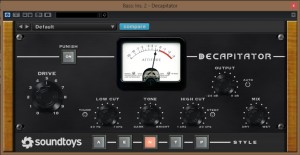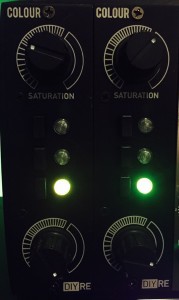Treasure From Trash: 3 Tips for Mixing with Distortion
Much of audio engineering is about avoiding distortion. Outside of guitar sounds and tube saturation, “distortion” is often considered a dirty word.
“Dirty” is all a matter of perspective though, and sometimes a little added grit can really accentuate your pristine sounds. Other times, a bit of overblown aggressiveness is the whole point.
No matter how far you take it, here are three quick and useful tips for making treasure from the trash:
#1: Parallel Distortion
As the name suggests, this involves distorting a copy of a track and blending it back in with your clean track.
This is different than just distorting a little bit, as you can get all the harmonics of really driving the signal, while still maintaining the tone and identity of the source.
In subtle amounts, this kind of distortion is an almost psycho-acoustic tool to push vocals, horns and other instruments forward. In larger servings this can give your midrange tons of attitude and take your bass from boring to room-shaking!
As most modern plugins provide a “Mix” control, this can easily be done on one track, but depending on the source, this might not be your solution.
I often like to use parallel distortion on drums, but the amount that’s right for the snare may not be the amount that’s right for the kick or cymbals. In this case, I prefer to put the effect on an aux send and have much more control of the amount of each drum/cymbal.This also allows for further processing, like EQ and compression, that targets only the distorted signal..
#2: Stereo Grit
If you’re running a stereo sound through distortion, consider doing so in dual mono instead of linked stereo.
Distorting each side of your signal by a different amount will make the source feel wider, while also collapsing to mono very well. The more variance, the wider the image, but the more you’ll need to adjust the trim/output level on your distortion units to maintain balance.
A variation on this approach is to EQ each side of the distortion differently. (This of course works on clean signals too.) Without using a linear phase EQ this could cause unexpected results, particularly when using hi- and lo-pass filters, so always make sure to listen in mono.
#3: Dirty Rooms
Reverb sends and returns aren’t sacred cows that can’t be mangled for fun and profit. For some engineers it’s a common practice to EQ and even compress reverb to enhance impact of the effect, and so there’s plenty of opportunity for distortion here too.
The first concern is: Pre or post ‘verb? That depends on whether you want a distorted sound in a clean space, or a full on special effect.
The former choice can certainly be subtle: A little bit of fuzz can be just the trick to add some character to a less than inspiring reverb while not affecting your clean sources.
Keep an eye (or rather, ear) on your highs, as any sibilance may become exaggerated with the distortion. If your distortion of choice doesn’t include any kind of EQ or tone controls, you may need to add an EQ or de-esser in-line before the reverb.
If you want to distort the room itself, there are a few points to keep in mind so things don’t get completely out of control. (Unless that’s what you want!) This effect is going to take up more space in your mix than a clean reverb, so more conservative return levels may be in order. This goes for reverb times as well: Longer times will take over quite a bit of your mix so this may not be the best move for your 4-second plate.
Finally, as discussed earlier on, distortion is a great way to add size to your low end, but adding low end distortion to your reverb return might be overwhelming. If that becomes the case a shelving EQ after the distortion will help you rein it in.
These are just a few ways to creatively use distortion to your advantage. Tell us about some of your own favorites in the comments below. Clean and pristine is wonderful, but don’t be afraid to play in the dirt sometimes.
Please note: When you buy products through links on this page, we may earn an affiliate commission.









Paul
September 17, 2015 at 5:55 pm (9 years ago)Good tips. I use distortion all the time and for me, one of the most important principals is that distortion will take away some low end from the bottom-y instruments (bass, kick drum). So, when using distortion on these instruments I almost always separate them into two tracks, and use one for a clean low end and the other for a distorted high end. (This is sort of a different method but same idea as tip #1 above, parallel distortion.)
Paul Womack
September 18, 2015 at 1:17 pm (9 years ago)Great point! Distortion will add to the upper harmonics, but it’s definitely important to maintain that bottom